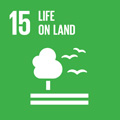- Docente: Davide Roncarati
- Credits: 7
- SSD: BIO/11
- Language: English
- Teaching Mode: Traditional lectures
- Campus: Bologna
- Corso: First cycle degree programme (L) in Biology of Human and Environmental Health (cod. 5909)
-
from Sep 23, 2024 to Dec 20, 2024
Learning outcomes
At the end of the course, the student possesses in-depth knowledge of the molecular mechanisms underlying genome editing methodologies in eukaryotic and prokaryotic cells and the main applications in biotechnology. In particular, the student is able to: 1) analyze and discuss topics concerning the basic mechanisms and applications of these methodologies; 2) understand and critically analyze the biomolecular literature.
Course contents
Introduction to basic concepts concerning nucleic acids in the cell. Chemical structure of nucleic acids. Physical structures of DNA and RNA molecules. Genetic code, genes and genomes. Physical structure of genetic material: bacterial chromosomes (chromatin), eukaryotic chromatin, higher order chromatin structures.
DNA recombination. Biological role of homologous recombination. Molecular mechanisms of homologous recombination in bacterial cells and in eukaryotic cells. Non-homologous recombination. Site-specific recombination.
Mechanisms of DNA repair. Types of DNA lesions. Pathways and mechanisms of DNA repair: DNA photolyase, Nucleotide Excision Repair, Base Excision Repair, Mismatch Repair. Repair mechanisms of DNA double-strand breaks: Nonhomologous end-joining and homologous recombination repair.
Conventional approaches used for genome-editing: homologous recombination, chemical methods and approaches based on homing endonucleases.
Genome-editing approaches based on modern methodologies using sequence-specific all-protein nucleases: mega-nucleases, zinc-finger nucleases (ZFNs) and Transcription Activator-Like Effector Nucleases (TALENs).
Genome-editing approaches based on methodologies using RNA-guided nucleases: Clustered regularly interspaced short palindromic repeats (CRISPR-CAS systems).
Examples of applications of the various systems in different fields.
Laboratory part: molecular biology lab with single workstations during which a CRISPR-Cas system will be used to specifically target a gene of interest in the Escherichia coli genome.Readings/Bibliography
Zlatanova, Jordanka, Kensal E. Holde. Molecular Biology, 2nd Edition. Garland Science, 20230421. VitalBook file.
Reviews and seminal papers.
Teaching methods
Lessons, analysis and in class discussion of seminal research papers.
Summarizing PowerPoint presentations.
Student workgroups, flipped classroom approaches, active learning exercises.
Wetlab course in a molecular biology lab with single workstations.Assessment methods
The final exam will verify the acquisition of the main learning outcomes. In particular, the student will be able to:
1) analyze and discuss topics concerning the basic mechanisms and applications of these methodologies;
2) understand and critically analyze the biomolecular literature.
The final exam consists of an oral interview on three questions, covering different parts of the program (verification of learning outcomes 1 and 2). For each question, the student will receive a grade, based on the demonstrated ability to expound concisely and completely on the specific topics, with some cues for critical analysis. The different partial grades contribute to the final grade.
The criteria used to assess the acquisition of knowledge and skills are: 1) comprehension of the topics; 2) completeness of knowledge acquired; 3) use of appropriate language during oral exposition and ability to synthesize concepts; 4) ability to link the various topics covered.
Teaching tools
For students attending the course, all materials used for the lectures (ppt presentations, articles/reviews and book chapters/monographs) and for laboratory activities (presentation of exercises and related handouts) will be made available.
Office hours
See the website of Davide Roncarati
SDGs



This teaching activity contributes to the achievement of the Sustainable Development Goals of the UN 2030 Agenda.
